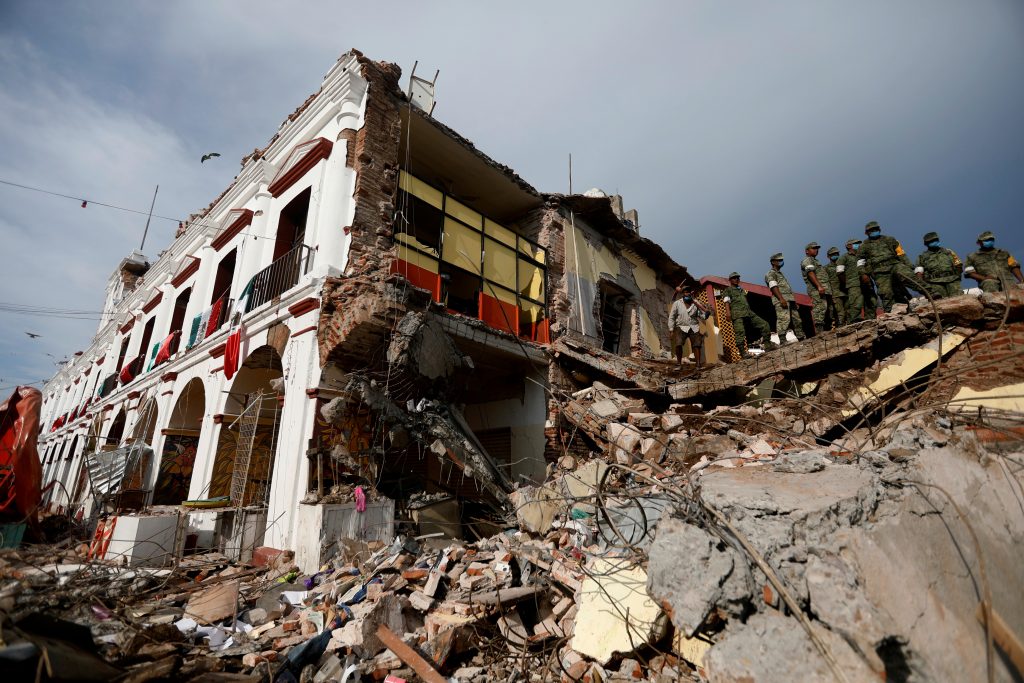On the morning of September 16, 1810, in the town of Dolores near Guanajuato, Mexico, priest Miguel Hidalgo y Costilla rang the bell of his church, urging parishioners to revolt against Spain’s Napoleonic government.
This call to arms, known as the Grito de Dolores, marked the beginning of the Mexican War of Independence. Annually, on September 15, the president of Mexico reenacts this historic moment from the balcony of the National Palace in Mexico City.
This year, President Enrique Peña Nieto added a poignant touch to the traditional Grito, referencing the recent earthquake that struck Mexico’s southern coast just a week before Independence Day. Nearly 100 lives were lost in the quake, prompting the president to include a plea for solidarity with the affected states of Chiapas and Oaxaca in his cry.

Dual Earthquakes Lay Bare Mexico’s Profound Economic Disparities (Credits: PBS)
While this gesture added a unique element to the tradition, the recovery for Chiapas and Oaxaca requires more than expressions of solidarity. The 8.2 magnitude earthquake was the strongest in Mexico in a century, surpassing even the devastating 1985 quake. Although building regulations and disaster response systems have improved since then, the damages remain substantial.
The earthquake’s impact is particularly severe in Chiapas and Oaxaca, Mexico’s two poorest states. Over 2,500 schools and 85,000 houses have been severely affected, with a significant portion deemed beyond repair. The poverty prevalent in these states exacerbates the disaster’s consequences, with a large percentage of the population earning less than what’s needed for basic family needs.
President Peña Nieto’s announcement of 16 billion Mexican pesos in federal disaster assistance for affected municipalities raises concerns about the effective distribution of aid.
The economic disparity in Mexico, highlighted by uneven development, remains a persistent challenge. Recent economic growth has favored the northern and central regions, leaving the rural south, including Chiapas and Oaxaca, lagging behind.
The earthquake has brought attention to the historical neglect of Chiapas and Oaxaca, home to around nine million people, many of whom are of indigenous descent. Economic exclusion of indigenous populations dates back to the colonial era, with the recent earthquake exposing the vulnerability of their homes and food supplies.
Mexico’s resilience in the face of earthquakes is evident in the aftermath. While government response and political actions may fall short, the people’s spontaneous initiatives, such as forming work brigades and assisting neighbors, showcase the strength and unity of the Mexican populace.
The earthquake has highlighted both the challenges faced by the marginalized southern regions and the resilience and solidarity of the people.























